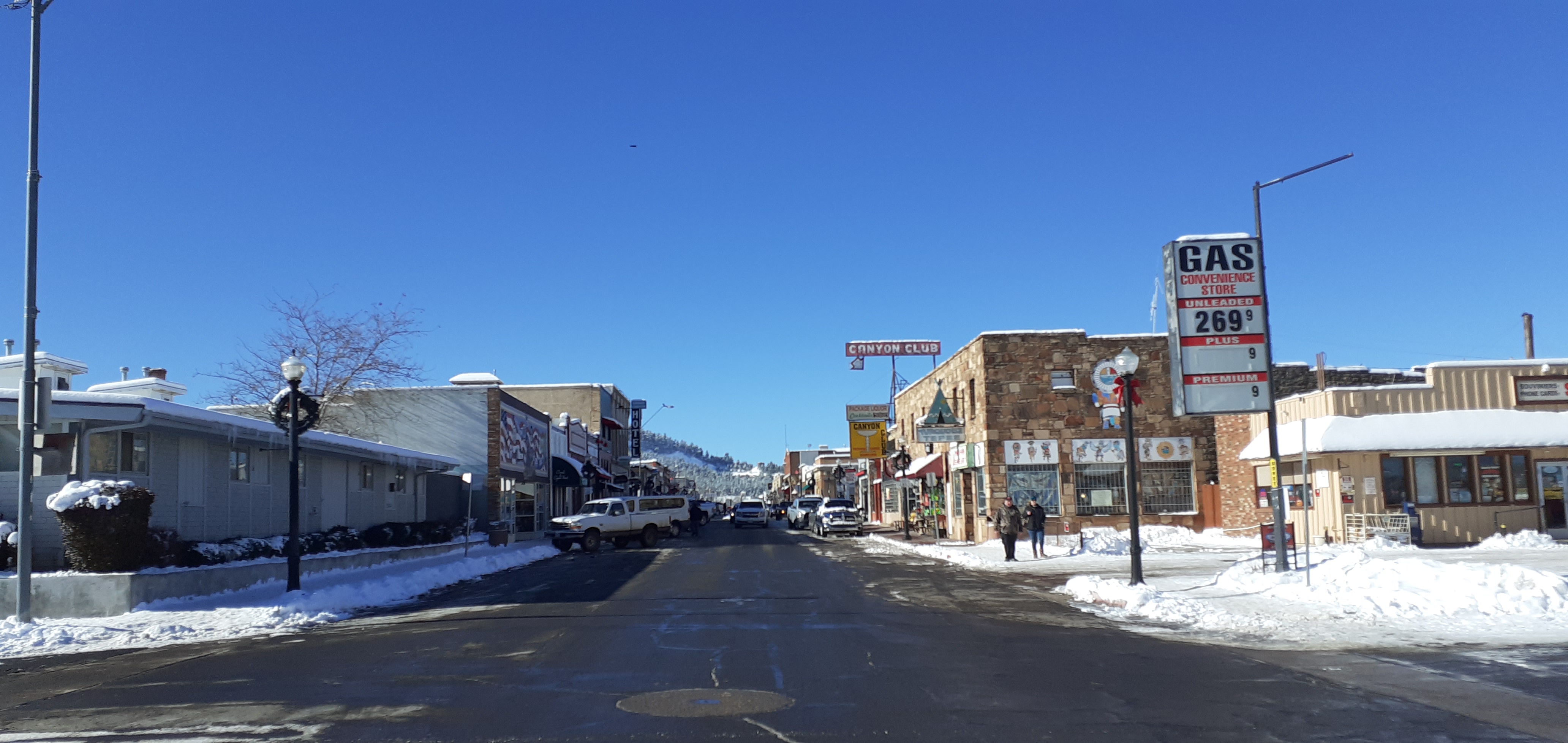|
Sycamore Canyon
Sycamore Canyon is the second largest canyon in the Arizona redrock country, after Oak Creek Canyon. The long scenic canyon reaches a maximum width of about . It is in North Central Arizona bordering and below the Mogollon Rim, and is located west and northwest of Sedona in Yavapai and Coconino counties. Description Sycamore Creek, a tributary of the Verde River, flows through the canyon. Sycamore Canyon enters the Verde River canyon north-northwest of Clarkdale. Located within three different U.S. National Forests, the Coconino, Kaibab, and Prescott National Forests, Sycamore Canyon is home to a variety of wildlife including black bear, deer, and mountain lion. Unlike the nearby and more heavily visited Oak Creek Canyon, much of Sycamore Canyon is protected by the Sycamore Canyon Wilderness, located at , and therefore roads and developed campgrounds are nonexistent. Hiking and horseback riding are the only ways to visit the canyon. The most popular access is via the Par ... [...More Info...] [...Related Items...] OR: [Wikipedia] [Google] [Baidu] |
Williams, Arizona
Williams ( yuf-x-hav, Wii Gvʼul) is a city in Coconino County, Arizona, United States, located west of Flagstaff. Its population was 3,023 at the 2010 census. It lies on the routes of Historic Route 66 and Interstate 40. It is also the southern terminus of the Grand Canyon Railway, which takes visitors to Grand Canyon Village. There are numerous inns, motels, restaurants and gas stations catering to the large influx of tourists rather than local residents, especially during the summer and holiday seasons. Also known as the "Gateway to the Grand Canyon", Williams was the last city on Historic Route 66 to be bypassed by Interstate 40. The community, bypassed on October 13, 1984, continues to thrive on tourism. Boasting seven fishing lakes in the area, hiking trails up Bill Williams Mountain and into Sycamore Canyon, an alpine ski area and cross country ski trails, four-seasons weather and an abundance of wildlife, Williams offers unlimited recreational opportunities for the out ... [...More Info...] [...Related Items...] OR: [Wikipedia] [Google] [Baidu] |
Kaibab National Forest
At 1.6 million acres (650,000 ha) the Kaibab National Forest borders both the north and south rims of the Grand Canyon, in north-central Arizona. It is divided into three major sections: the ''North Kaibab Ranger District'' (offices in Fredonia) and the South Kaibab and are managed by the United States Forest Service. The South Kaibab is further divided into two districts, the ''Tusayan Ranger District'' (offices in the Grand Canyon), and the ''Williams Ranger District'' (offices in Williams). Grand Canyon National Park separates the North Kaibab and the South Kaibab. The South Kaibab covers and the North Kaibab stretches over . Elevations vary on the forest from 5,500 feet (1,676 m) in the southwest corner to 10,418 feet (3,175 m) at the summit of Kendrick Peak on the Williams Ranger District. The forest as a whole is headquartered in Williams. North Kaibab The Kaibab Plateau is an island surrounded by lower elevations. The plateau, with elevation up to 9,215 feet (2,800 ... [...More Info...] [...Related Items...] OR: [Wikipedia] [Google] [Baidu] |
Wilderness Areas Of Arizona
Wilderness or wildlands (usually in the plural), are natural environments on Earth that have not been significantly modified by human activity or any nonurbanized land not under extensive agricultural cultivation. The term has traditionally referred to terrestrial environments, though growing attention is being placed on marine wilderness. Recent maps of wilderness suggest it covers roughly one quarter of Earth's terrestrial surface, but is being rapidly degraded by human activity. Even less wilderness remains in the ocean, with only 13.2% free from intense human activity. Some governments establish protection for wilderness areas by law to not only preserve what already exists, but also to promote and advance a natural expression and development. These can be set up in preserves, conservation preserves, national forests, national parks and even in urban areas along rivers, gulches or otherwise undeveloped areas. Often these areas are considered important for the survival of c ... [...More Info...] [...Related Items...] OR: [Wikipedia] [Google] [Baidu] |


